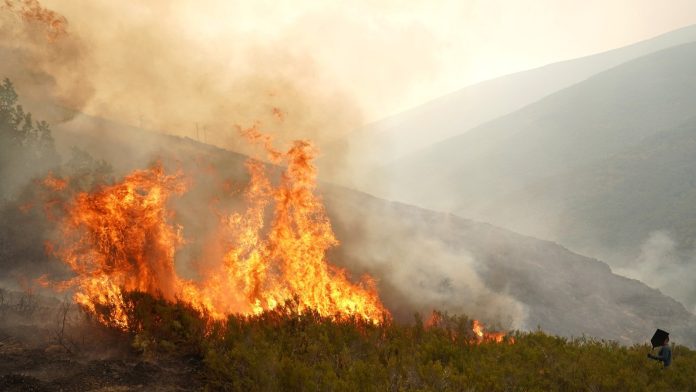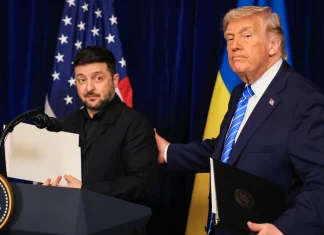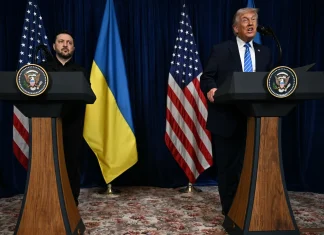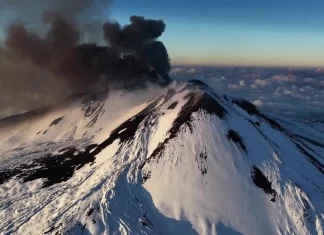
Europe’s Fiery Inferno: A Record-Shattering Wildfire Crisis Unfolds in 2025
When the old world breathes fire, the tales it tells are both ancient and alarmingly new. In 2025, Europe finds itself engulfed in one of the most devastating chapters of its ecological history. This year, wildfires have scorched over one million hectares—an area larger than the island nation of Cyprus—surpassing every blazing record held since the European Union started tracking such disasters in 2006. But this isn’t just a headline; it’s a crisis that flickers with the harsh realities of climate change, community resilience, and the stark fragility of our forests.
The Blazing Statistics Behind Europe’s Firestorm
According to a thorough analysis of official data by AFP, the tally of burnt land has already topped 1,015,731 hectares by mid-August 2025. This shatters the previous record set in 2017, when wildfires consumed 988,524 hectares throughout the EU. To put this into tangible perspective, imagine a fire stretching relentlessly across a country the size of Cyprus—a Mediterranean jewel now merely a shadow in smoke.
The European Forest Fire Information System (EFFIS), part of the Copernicus climate monitoring initiative, paints a sobering image: fires ravage at least 30 hectares per incident to even register in these statistics, meaning the true footprint of smaller but numerous fires is likely significantly greater.
Spain and Portugal: The Blistering Frontlines
Spain remains the worst-hit nation. Its western provinces burn fiercely, with flames leaping through ancient forests and pastures, leaving behind scars not only on the land but in the hearts of the local communities. Over 400,000 hectares have been scorched here, accounting for nearly 40% of the total area razed in the whole of the EU. Tragically, four lives have already been lost in these fires.
Maria Sánchez, a lifelong resident of Castilla y León, reflects on the devastation that has become all too common: “The smell of smoke lingers everywhere. Forests my grandfather showed me as a child—gone. We are losing more than trees; we’re losing our soul.”
Meanwhile, Portugal is no stranger to fire—holding the EU record for burned land in a single year with 563,530 hectares in 2017. Yet this year, the landscape is once again ablaze, with nearly 274,000 hectares burnt before August’s end—an unprecedented early tally. Firefighting crews and volunteers continue to battle tirelessly, their efforts underscored by a determination born from painful experience.
Other Hard-Hit Regions: Romania, France, and Beyond
Romania’s forests have not been spared either, with over 126,000 hectares blackened by flames. In the south of France, the Aude region bore the brunt of a massive early August blaze, incinerating 35,600 hectares of woodland. French firefighter Jean-Luc Caron describes the situation: “These fires move fast, driven by wind and an unforgiving summer. Each day, we race against nature’s fury, knowing what is lost on these frontlines cannot simply be replaced.”
Yet, this fiery scourge does not recognize borders. The United Kingdom experienced its own alarm bells: record-breaking fires during an unusually hot April heatwave and later in northern Scotland magnify that even cooler climes are not safe from wildfire these days.
The Balkans offer perhaps the most sobering warnings. Serbia, reporting its most destructive year since such records began, signals a broadening geographic reach of these blazes—testament to shifting climate patterns and human vulnerability.
Carbon Emissions and the Climate Toll
Beyond the visible devastation lies a worrisome environmental echo. By August 19th, 22 out of 27 EU nations have seen forest fires emit approximately 35 megatons of CO2—a crisis marker already threatening to surpass the annual emissions record set in 2017 which was 41 megatons. The wildfires have become a feedback loop in the climate crisis: the hotter and drier conditions fuel more fires, which in turn release more carbon, amplifying global warming.
Climate scientist Dr. Elena Martin from Barcelona University warns: “These numbers are not just statistics—they represent a tipping point. Forests are critical carbon sinks. Losing them on this scale threatens our ability to manage atmospheric carbon and puts our common future at grave risk.”
Human Stories Amidst the Flames
The human toll, while currently less than the tragic heights of 2017—in which over 200 people died across Portugal, Italy, Spain, and France—is no less poignant. As of now, ten lives have been lost this year: two in Cyprus, one in France, and seven in the Iberian Peninsula.
Josefina Martins, a Portuguese nurse volunteering to treat displaced families, shares, “People are not just losing property or farmland. They’re losing their sense of home, their security. Fires leave an invisible wound that takes years to heal.”
Cultural Ties and Ecological Bonds
Europe’s forests are woven deeply into the cultural tapestry of its peoples. From the cork oak groves of Portugal to Spain’s dense pinewoods and Cyprus’s woodlands—these landscapes shape local traditions, economies, and identities.
In many rural communities, wildfires jeopardize more than trees—they threaten ways of life passed down for generations. When flames consume olive groves, vineyards, or chestnut trees, they imperil the heritage of regional diets, economies, and social rhythms harmonized with the land.
What Can We Learn and Do? A Call for Reflection
As we hold our breath watching the flames rip across Europe, a pressing question emerges: can societies adapt fast enough to shield their environments and communities? Or will we see these fiery summers become the “new normal”?
- How can improved forest management and firefighting technology mitigate the damage?
- In what ways can local populations be empowered to coexist with, rather than combat, fire-prone ecosystems?
- What role should governments and international bodies play in funding proactive climate resilience?
- How might this crisis reshape our understanding of climate justice, especially for those living on the frontlines?
The wildfires of 2025 are a stark reminder that climate change is neither distant nor abstract—it is unfolding in our backyards, in our forests, and under our skies. The forests blaze but so can our resolve, if we listen, learn, and act with urgency and compassion.
In the face of roaring flames, Europe’s story is a wildfire narrative not just of loss, but of resilience and reckoning—an urgent call for a global audience to look, listen, and join the fight to protect the cherished green lungs of our planet.









